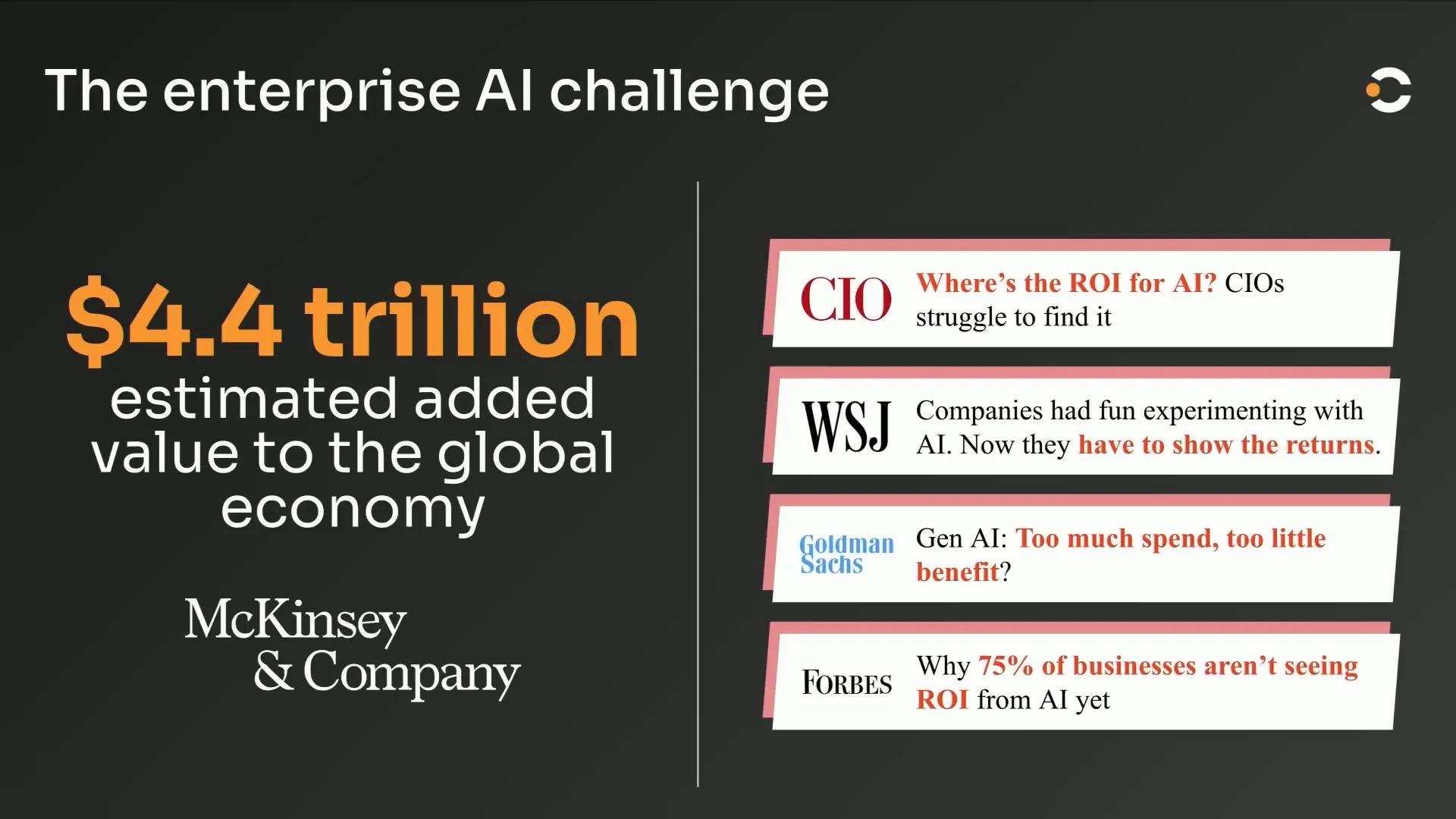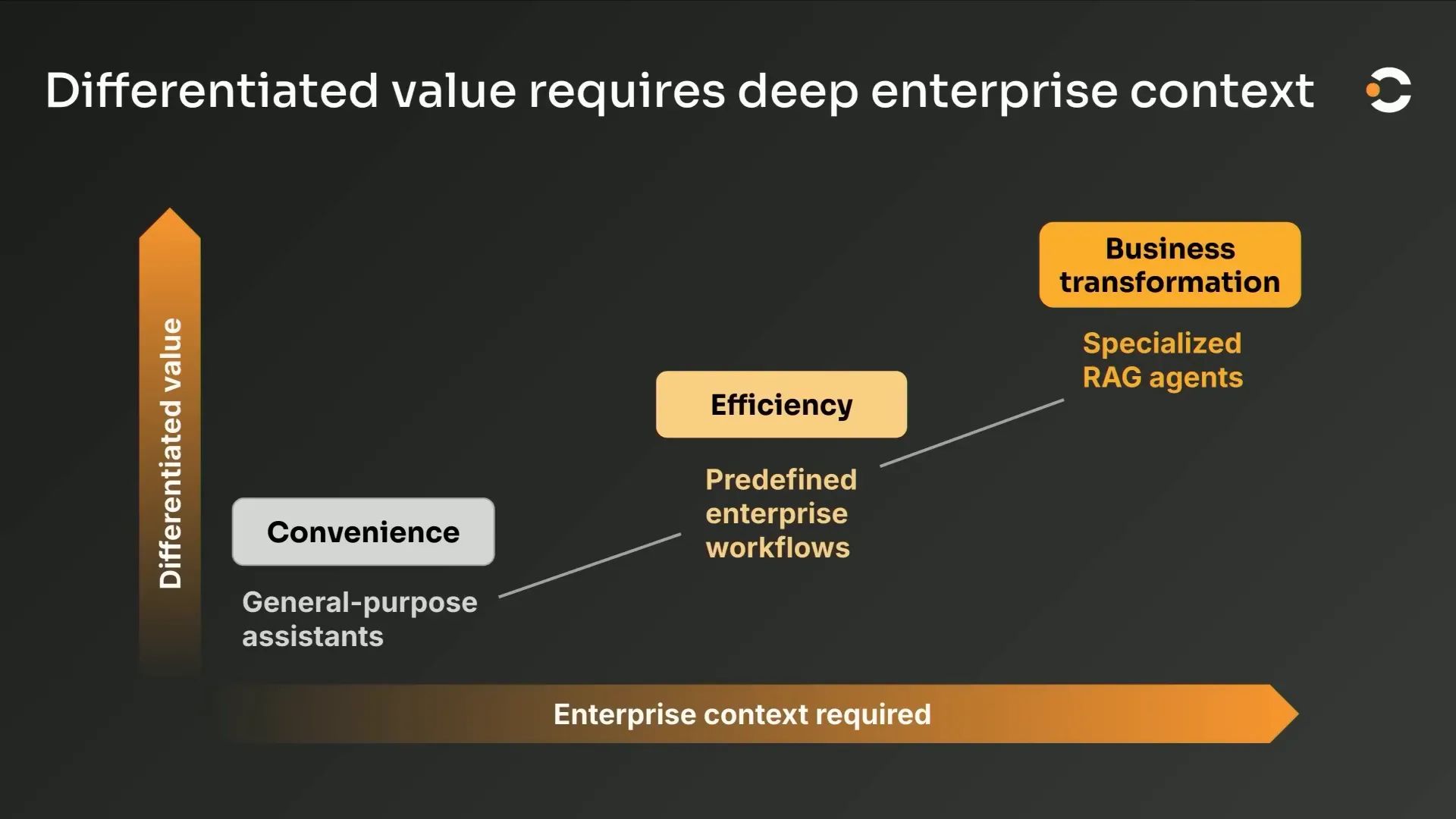AI in Recruiting and Enterprise AI: 10 Lessons Learned from Deploying RAG Agents in Production
In the rapidly evolving landscape of artificial intelligence, enterprises face both unprecedented opportunities and significant challenges. Douwe Kiela, CEO of Contextual AI and the pioneer behind Retrieval-Augmented Generation (RAG), shares invaluable insights drawn from years of AI research and practical experience deploying AI systems at scale in enterprise environments. His observations shed light on why many companies struggle to realize the ROI of AI investments and how to overcome these barriers by focusing on context, system design, and ambition.
This article distills Douwe’s key lessons on deploying RAG agents in production, emphasizing how these lessons apply broadly—including to domains like AI in recruiting. Whether you are a VP of AI, an engineer, or a business leader, understanding these principles can help you unlock the transformative potential of AI in your enterprise.

The Promise and Paradox of Enterprise AI
Enterprise AI is heralded as a transformative force, with estimates suggesting it could add a staggering $4.4 trillion to the global economy, according to McKinsey. This massive opportunity has led to a surge in AI investments across industries. Yet, despite this enthusiasm, many organizations face a frustrating reality: the return on investment (ROI) often falls short of expectations.
As Douwe points out, a Forbes study revealed that only one in four businesses actually derive value from AI. This paradox raises a critical question: why is it so difficult for enterprises to convert AI investments into tangible business outcomes?
To understand this, Douwe draws a parallel with Moravec’s paradox from robotics. In robotics, it was surprisingly easier to create a computer that could beat humans at chess than to build a robot capable of vacuuming a house or driving a car autonomously. The paradox is that tasks humans find intellectually challenging are often easier for machines, while tasks that seem simple to humans—like navigating physical environments or understanding nuanced context—are extremely difficult for AI.
Similarly, in enterprise AI, particularly in applications like AI in recruiting, AI models excel at tasks such as code generation or mathematical problem-solving but struggle with contextual understanding—an essential element for delivering real business value.
The Context Paradox: Why Context Matters More Than Ever
Douwe identifies a crucial “context paradox” at the heart of enterprise AI challenges. While large language models (LLMs) are powerful, their ability to apply knowledge effectively depends on understanding the specific context within which they operate. Humans naturally excel at contextualizing information based on experience and expertise, but AI systems often fall short.
This gap in contextual understanding limits AI’s ability to deliver differentiated value beyond mere convenience. Most current AI deployments focus on general-purpose assistance—helping users complete tasks faster or automate routine activities. While this boosts productivity, it rarely leads to the kind of business transformation that enterprises aspire to.
The real prize lies in moving beyond convenience toward business transformation. This requires AI systems that deeply understand enterprise-specific context, data, and workflows. Douwe illustrates this concept with a simple diagram, showing that as AI moves from convenience to differentiated value, the demand for superior context handling grows exponentially.

Building Systems, Not Just Models
One of the foundational lessons Douwe shares is that language models alone are just one component of a much larger system. In enterprise AI, especially with RAG agents, the language model typically constitutes only about 20% of the entire system.
RAG (Retrieval-Augmented Generation) combines powerful language models with retrieval systems that fetch relevant data from enterprise knowledge bases. This approach enables AI to generate answers grounded in real, up-to-date information rather than relying solely on pre-trained knowledge.
Douwe emphasizes that enterprises often get caught up in the hype around the latest language model releases, focusing too narrowly on the model itself. However, the surrounding infrastructure—the retrieval pipeline, data processing, integration layers, and user interfaces—plays a far more significant role in delivering real-world value.
He makes a compelling point: a mediocre language model with an excellent retrieval and system pipeline will outperform a state-of-the-art model with a poor surrounding system.
Expertise is the Fuel of Enterprise AI
Enterprises possess vast reservoirs of institutional knowledge and expertise. Unlocking and leveraging this expertise is key to generating meaningful AI value. Generalist AI assistants often fail to capture or replicate the nuanced understanding that human experts bring to specialized domains.
Douwe advocates for specialization over the pursuit of artificial general intelligence (AGI) in enterprise settings. While AGI remains an exciting long-term goal, solving practical, domain-specific problems requires tailored AI models and systems designed to harness the unique expertise within an organization.
This specialization approach is particularly relevant for AI in recruiting, where knowledge about company culture, role requirements, and candidate evaluation criteria must be deeply embedded within the AI system to provide actionable insights.
Data is the True Moat of Enterprises
Companies often think of themselves as collections of people, but Douwe argues that over time, what truly defines a company is its data. People may come and go, but the data an enterprise accumulates—including documents, customer interactions, and operational records—is the enduring asset that forms its competitive advantage.
Enterprises must focus on enabling AI to work effectively on their noisy, complex, and often unstructured data at scale. Contrary to the common belief that data must be meticulously cleaned and scrubbed before AI can be applied, Douwe stresses the importance of building AI systems that can handle imperfect data robustly.
Successfully unlocking this potential leads to differentiated value and creates a moat that competitors cannot easily replicate.
From Pilot to Production: The Hardest Leap
While building pilot AI systems or demos has become relatively straightforward—with many frameworks available for RAG implementations—scaling these systems to production is a different story. Productionizing AI at enterprise scale involves significant complexity, including handling millions of documents, supporting thousands of users, and meeting stringent security and compliance requirements.
Douwe shares a hard truth: pilots are easy, but production is hard. Many AI projects fail because they are designed around pilots rather than production from the outset. When executives demand fast, large-scale deployment—such as replacing a significant portion of a customer support team with AI—teams often find themselves unprepared for the engineering and operational challenges involved.
AI Agents For Recruiters, By Recruiters |
|
Supercharge Your Business |
| Learn More |
The key lesson is to design for production from day one, not just for pilots. This mindset shift can save enormous amounts of time and effort down the line.
Speed Over Perfection: The Power of Iteration
In deploying RAG agents and other AI systems, speed matters more than perfection. Douwe advises releasing early versions to real users to gather feedback quickly, even if the system is only “barely functional.” This iterative approach—often described as “hill climbing”—allows teams to gradually improve the system based on real-world usage and evolving requirements.
Waiting to achieve a perfect solution before deployment often leads to stagnation and failure to bridge the gap from pilot to production.
Free Your Engineers from Boring Tasks
To maintain speed and agility, it’s crucial that engineers focus on high-impact work rather than mundane, repetitive tasks. Douwe points out that many engineers get bogged down in optimizing low-level details—like the optimal chunking strategy for a retrieval system or prompt engineering—that could be abstracted away by sophisticated platforms.
By leveraging state-of-the-art tools and platforms for RAG agents, organizations can free their technical teams to concentrate on delivering differentiated business value and competitive advantage.
Make AI Easy to Consume and Integrate
Despite having AI systems running in production, many enterprises struggle with adoption. Douwe frequently encounters companies that report zero real users despite significant investment. This often results from AI solutions being difficult to use or poorly integrated into existing workflows.
For AI to succeed, especially in areas like AI in recruiting, it must be seamlessly embedded into the user’s natural workflow. The easier it is for employees to access and interact with AI, the more likely it is to become a valuable, stick tool rather than a novelty.
The Importance of Creating “Wow” Moments
Generating early enthusiasm and “wow” moments is key to driving adoption. Douwe shares a compelling example from Qualcomm, where a customer engineer discovered a seven-year-old hidden document full of answers to long-standing questions through their AI system. This revelation transformed the engineer’s experience and demonstrated the tangible value of the technology.
Designing onboarding experiences that quickly deliver such moments can create advocates within the organization who help spread adoption and enthusiasm.
Beyond Accuracy: Managing Inaccuracy with Observability and Attribution
While accuracy remains important, Douwe stresses that it is now almost table stakes in enterprise AI. Achieving near-perfect accuracy is difficult, and enterprises are increasingly focused on managing the inevitable inaccuracies that remain.
Observability—tracking how AI systems make decisions and what data sources they rely on—is essential, especially in regulated industries. Audit trails that show exactly why a particular answer was generated, including clear attribution to source documents, build trust and enable compliance.
Post-processing techniques to verify claims and ensure proper attribution further mitigate risk and improve reliability.
Be Ambitious: Aim for Transformative ROI
Finally, Douwe encourages enterprises to be ambitious. Many AI projects fail not because their goals are too lofty, but because they aim too low—such as automating trivial HR questions or basic administrative tasks.
While these use cases have their place, they rarely generate meaningful ROI or lasting impact. Instead, enterprises should pursue bold transformations that leverage AI to solve complex, domain-specific challenges where the payoff is significant.
Douwe likens this moment in AI history to the moon landing era—a rare opportunity to shape the future of society and business. By aiming for the sky rather than the low-hanging fruit, enterprises can truly harness the power of AI.
Conclusion: Turning Challenges into Opportunities
The journey to successful enterprise AI deployment, including in areas like AI in recruiting, is fraught with challenges. However, by understanding and embracing the lessons Douwe Kiela shares from his experience building and scaling RAG agents, organizations can turn these challenges into competitive advantages.
- Focus on building robust systems rather than chasing the latest language model alone.
- Leverage your enterprise’s unique expertise through specialization.
- Recognize data as your company’s most valuable long-term asset and build AI to work with it at scale.
- Design for production from day one, not just pilots.
- Prioritize speed and iteration over perfection.
- Free engineers from mundane tasks to focus on business value.
- Make AI easy to consume by integrating it into existing workflows.
- Create “wow” moments to drive user adoption and enthusiasm.
- Manage inaccuracies through observability, attribution, and audit trails.
- Be ambitious in your AI goals to unlock transformative ROI.
By internalizing these principles, enterprises can move beyond the current frustrations and realize the full potential of AI to transform their businesses and industries.
As AI continues to evolve, those who master the context paradox and build thoughtful, specialized, and scalable systems will lead the way in the next generation of innovation.
Thank you for reading, and may your AI journey be both ambitious and impactful.